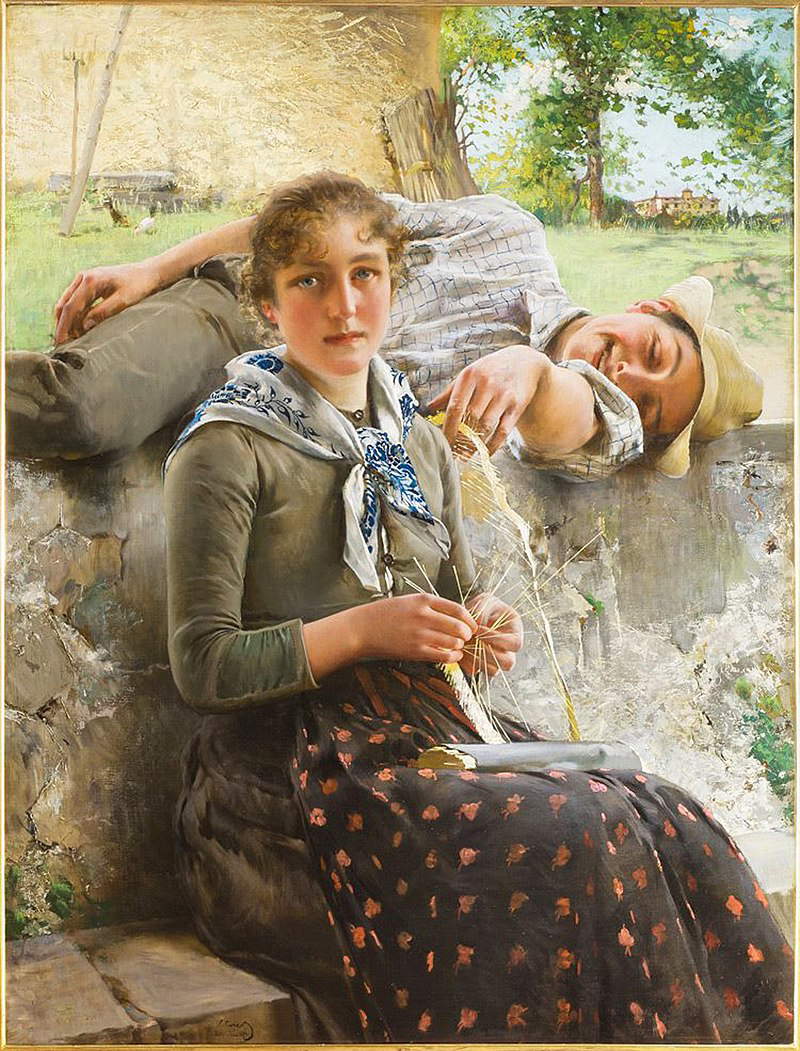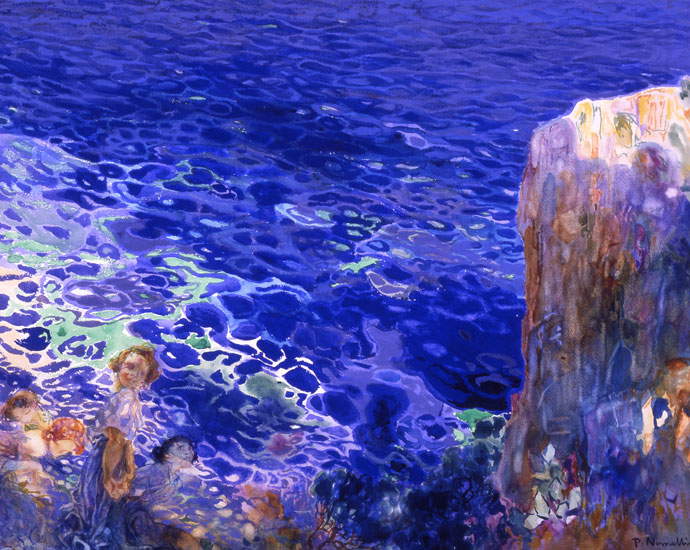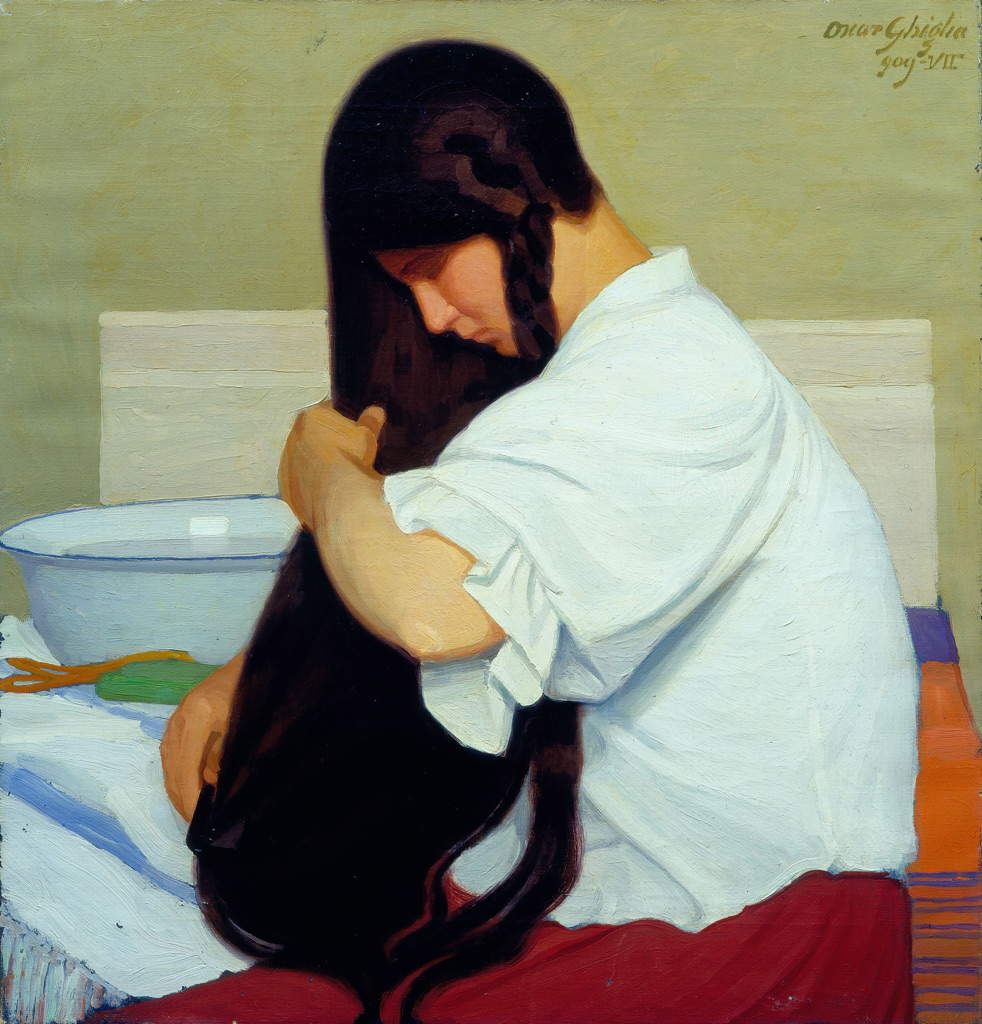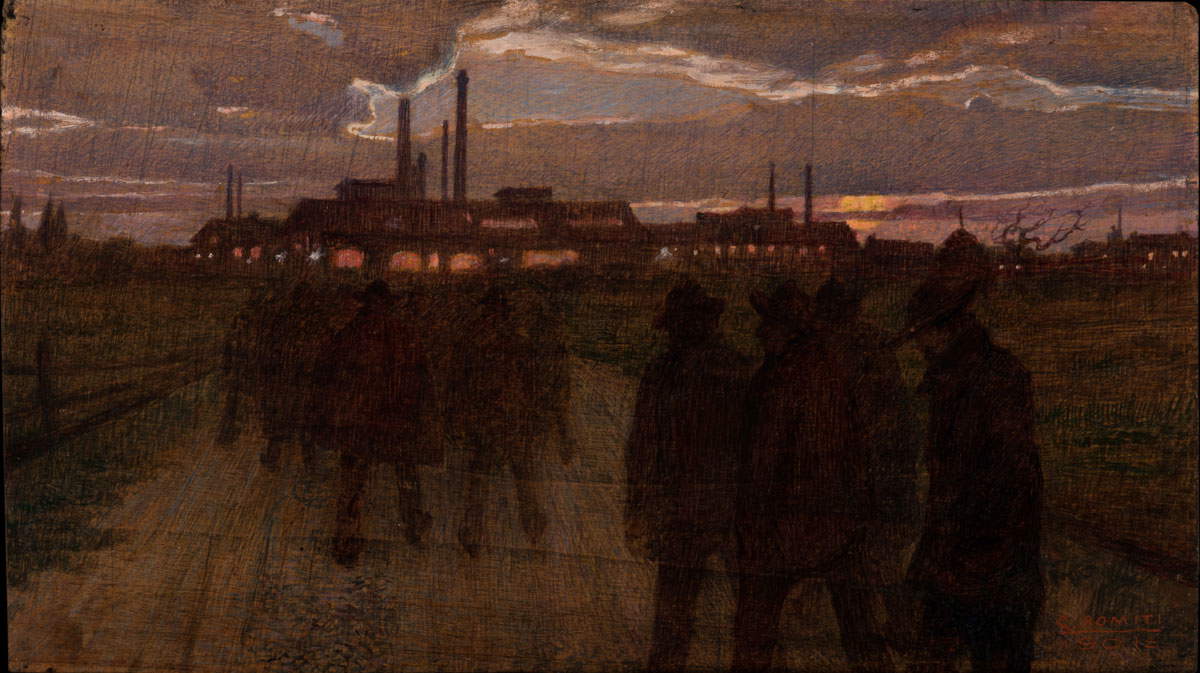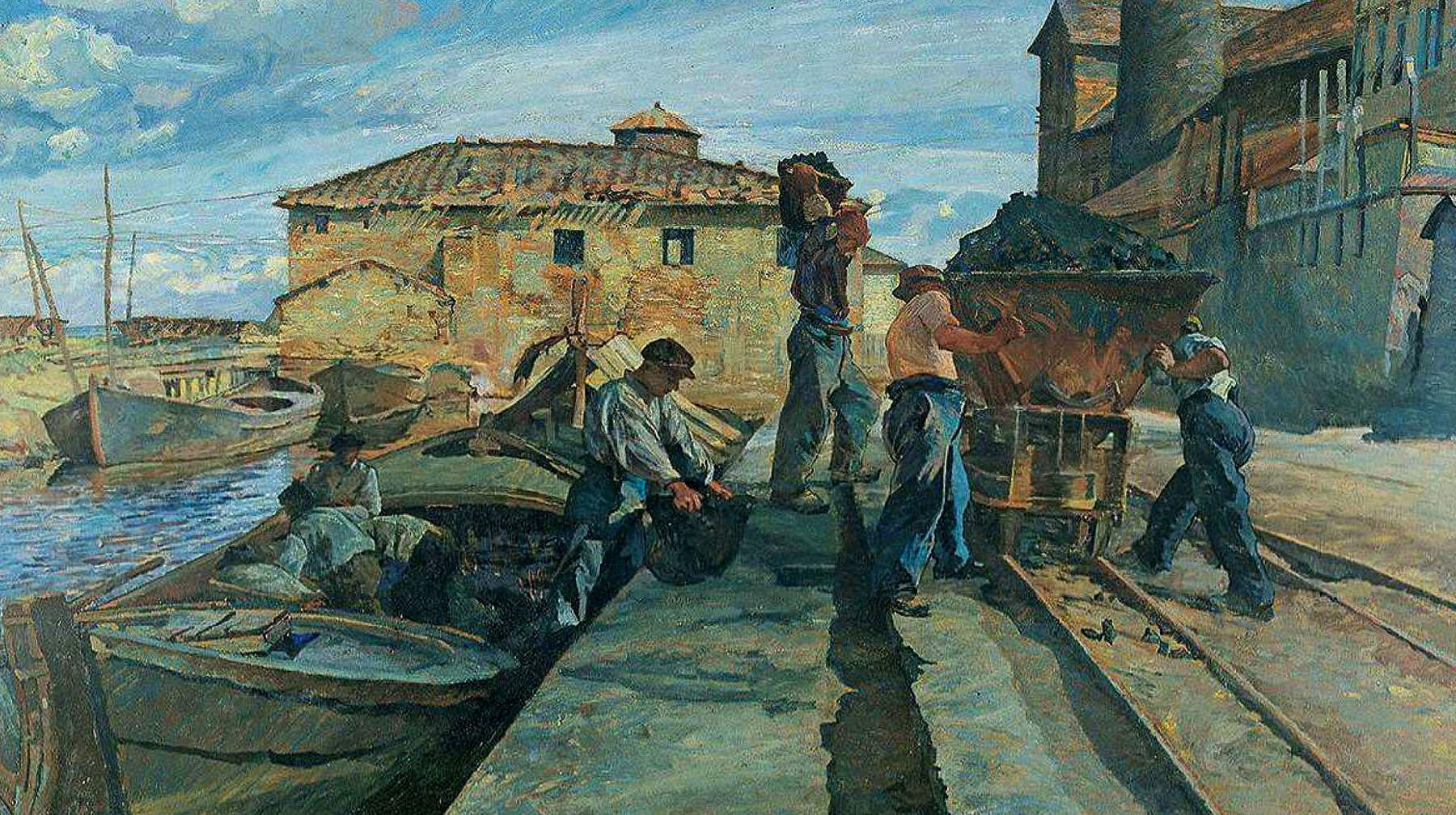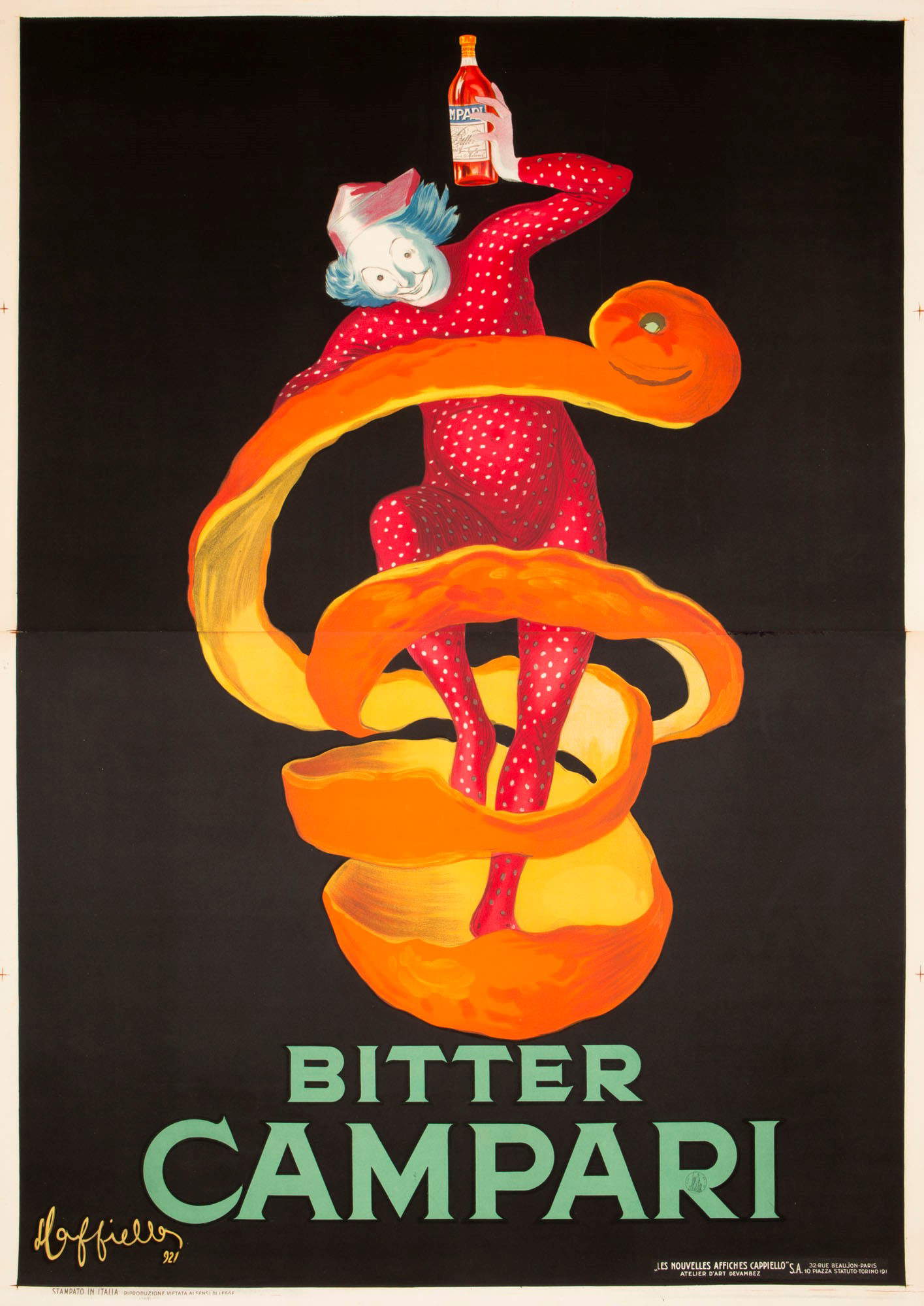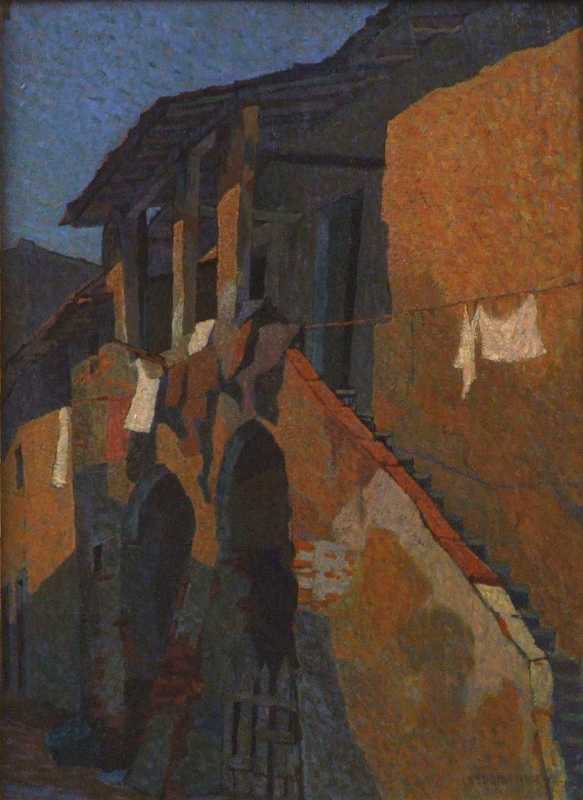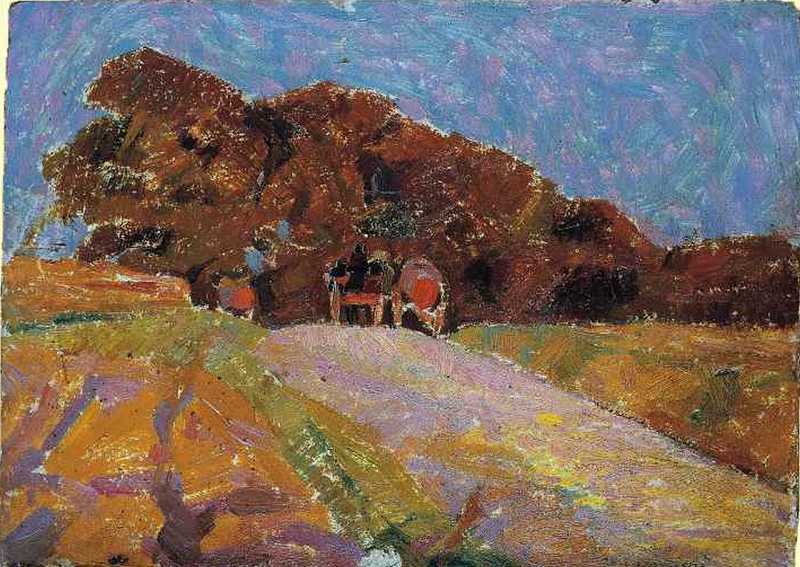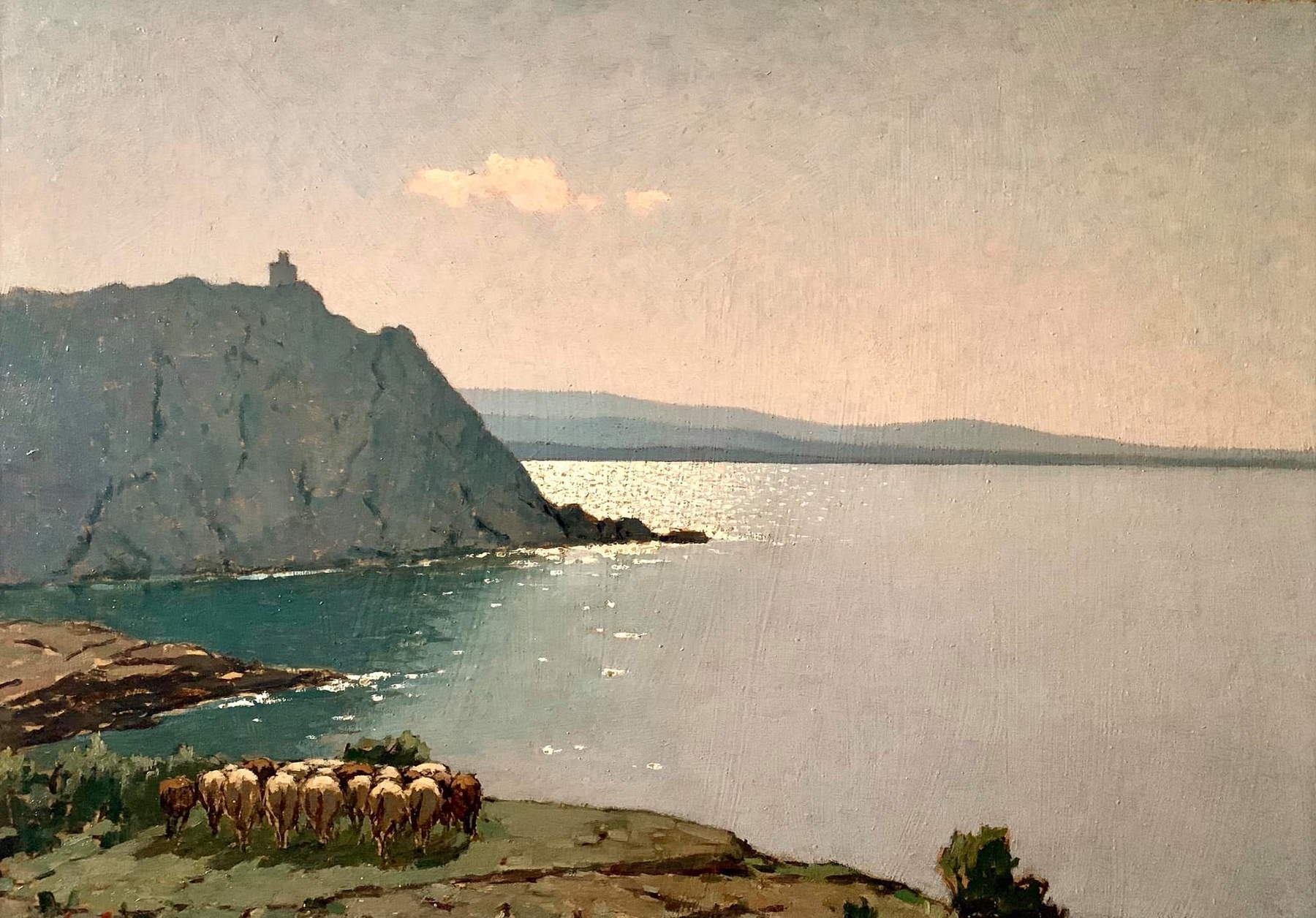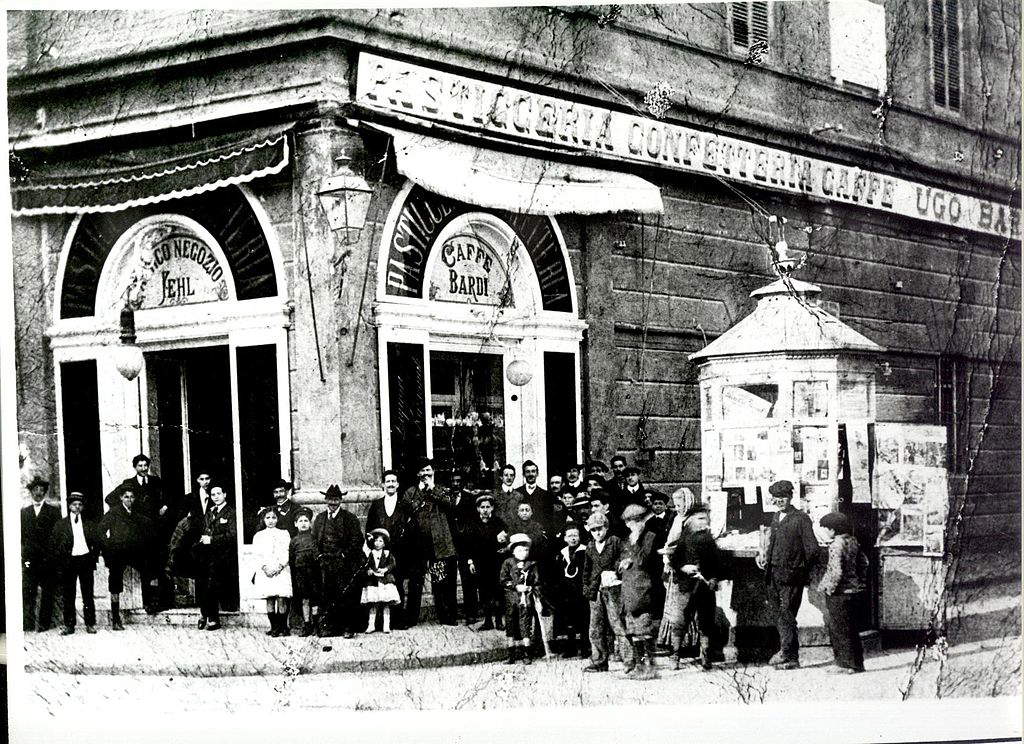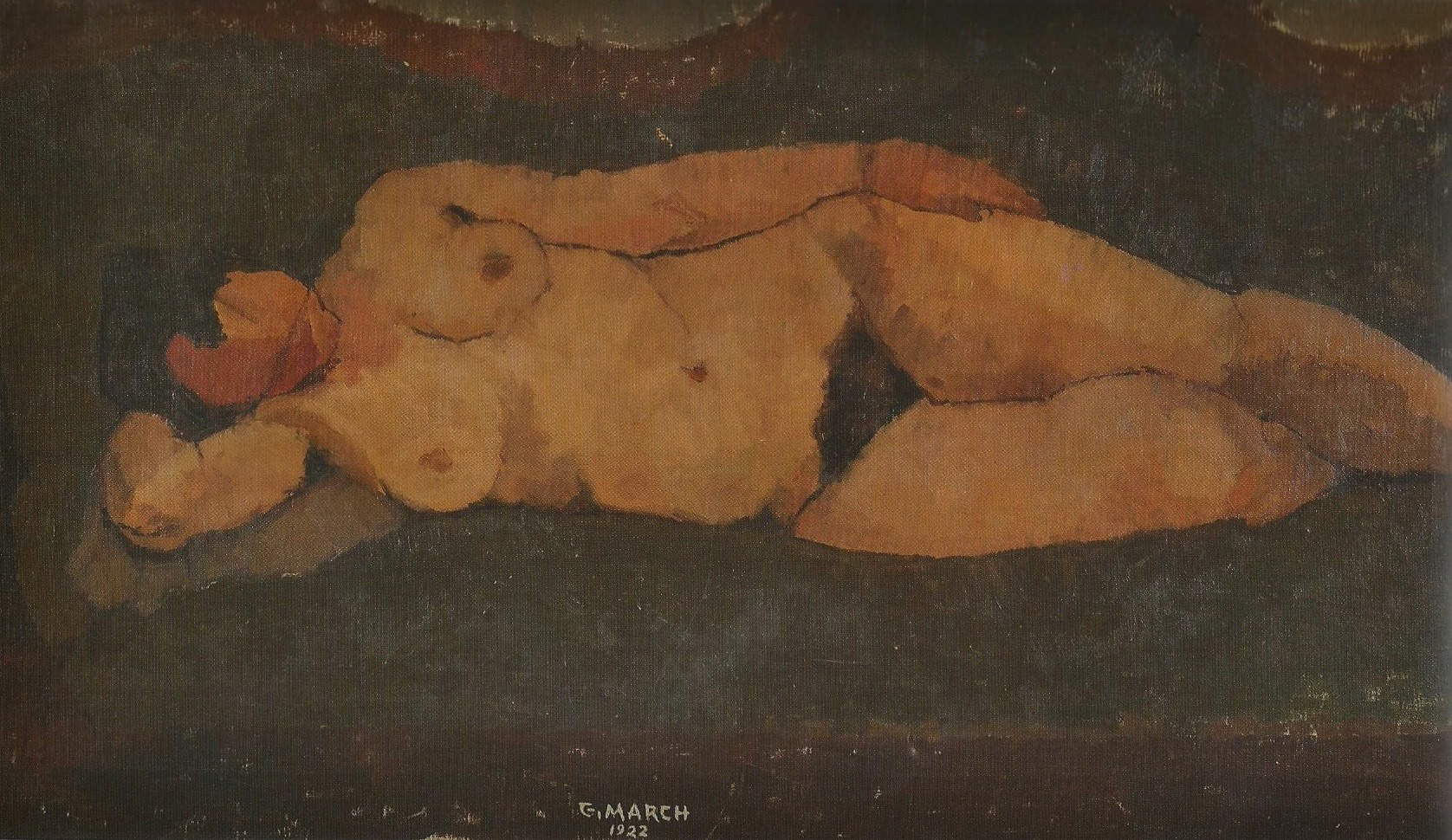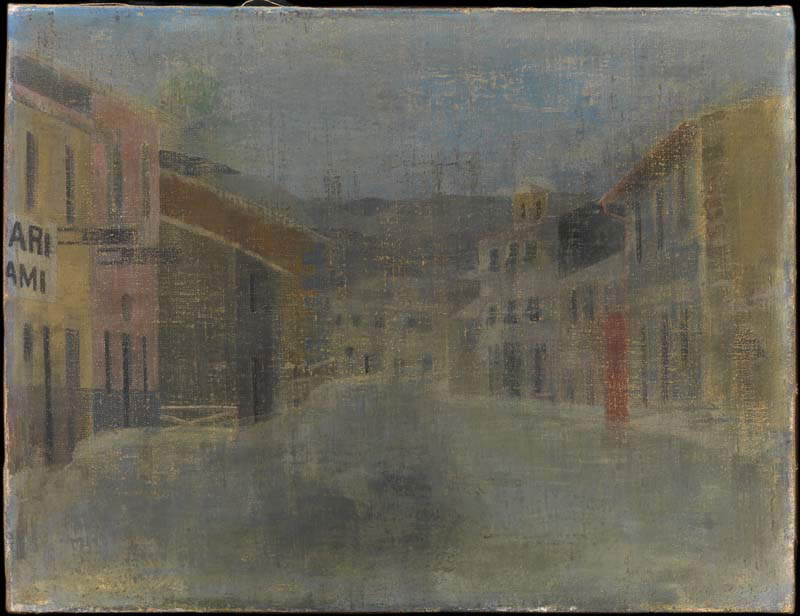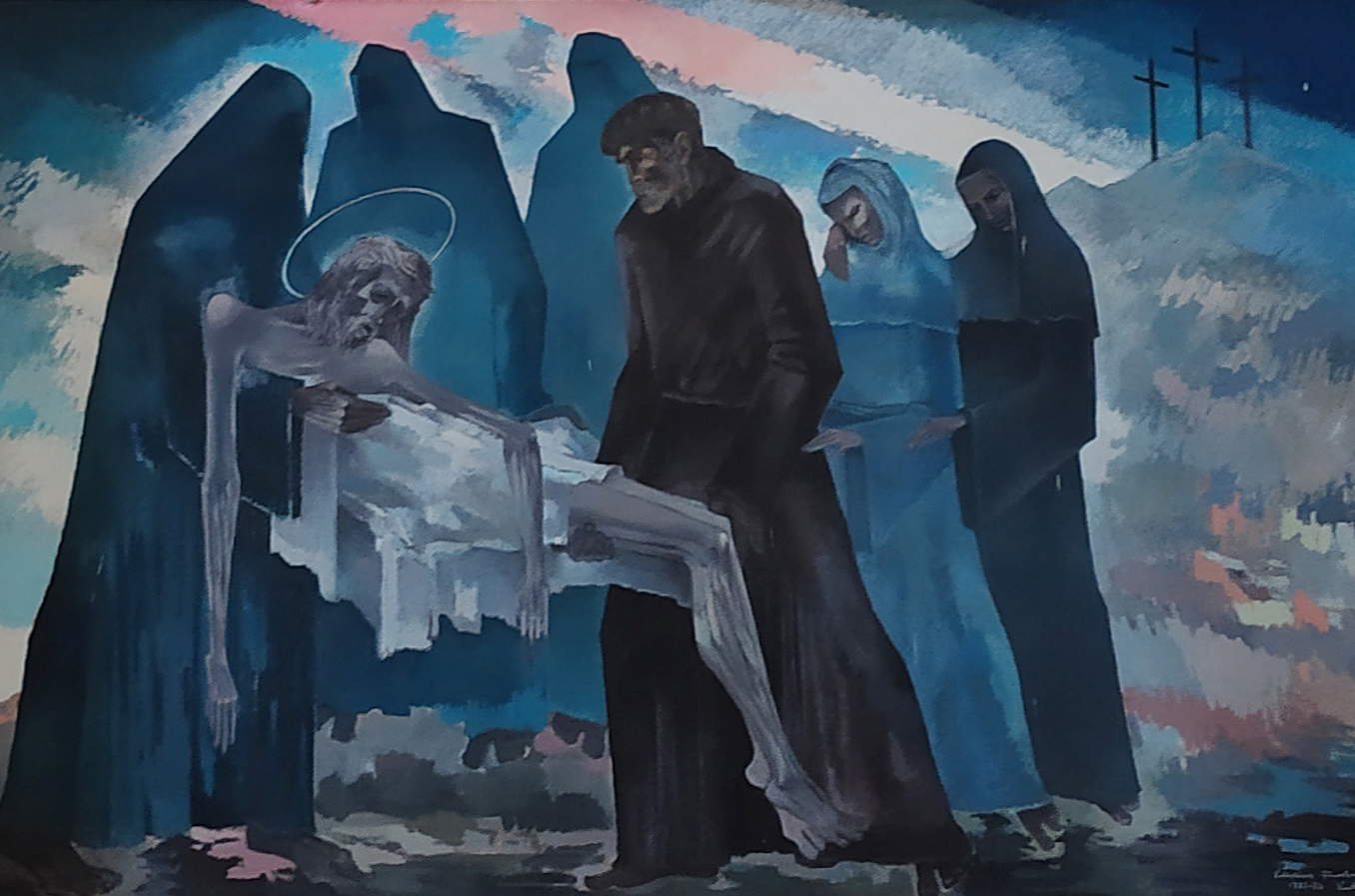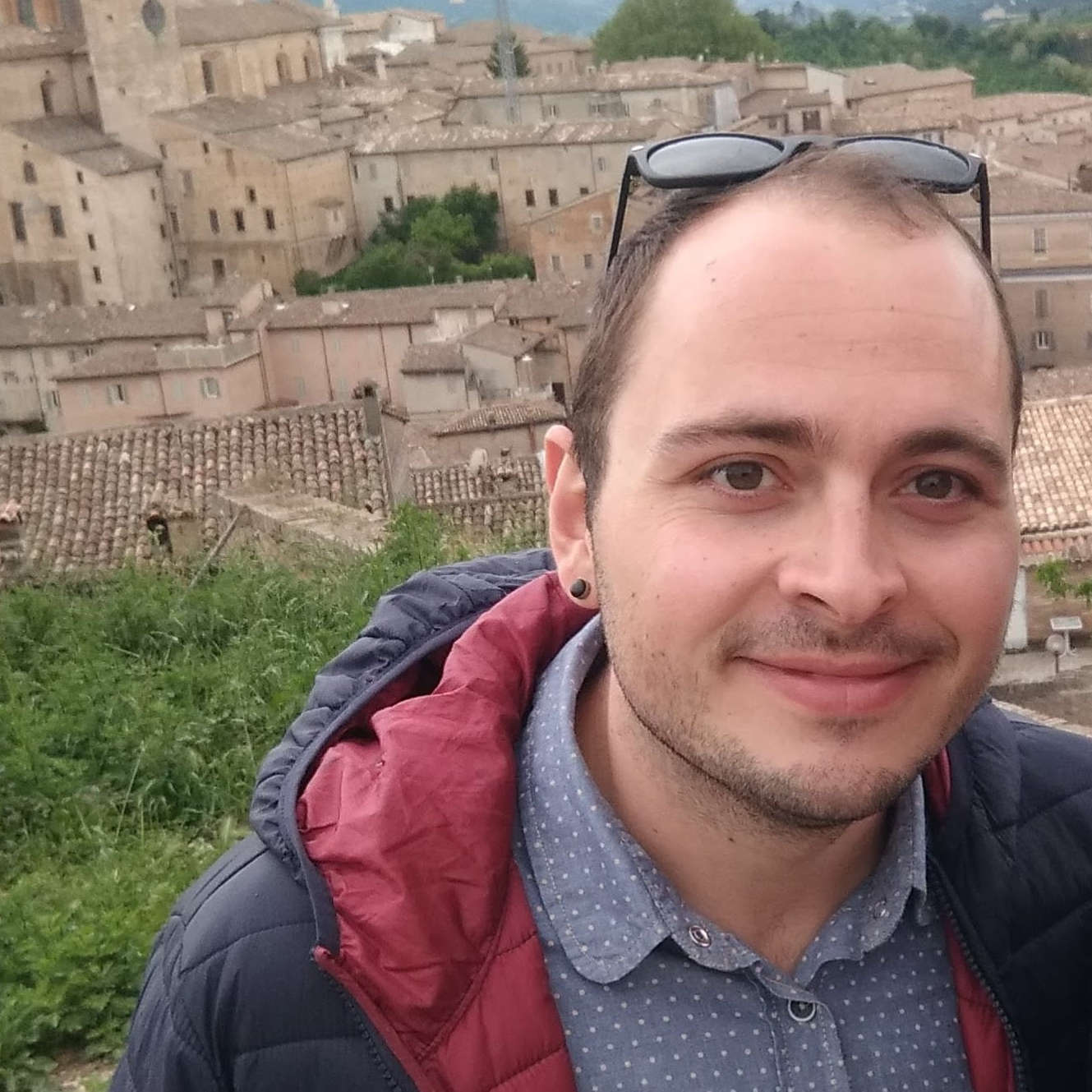by Jacopo Suggi, published on 20/08/2020
Categories:
Works and artists
/ Disclaimer
1920 was the year that saw the birth of the Labronico Group, an artistic association that was born in Livorno, a city that, from the mid-19th century onward, had important artistic events.
Speaking of Italian and European art history, it seems obvious to highlight the contribution made by ancient Tuscan municipalities such as Florence, Siena, Pisa, Pistoia and Arezzo, writing some fundamental chapters in almost every century. Less taken for granted, on the other hand, is the role that the art of that also Tuscan, but much less ancient municipality that is Livorno, carved out for itself in the artistic events of the second half of the 19th century until the middle of the following century. In the nineteenth century, the contribution of the coastal city consists mostly of being the birthplace of many important artists, first and foremost Giovanni Fattori, in whose Macchiaioli compote are also joined by other Livornians Serafino De Tivoli and Giovanni Costa. Livorno also became the refuge and subject of many artists who found in the city of Livorno an unspoiled countryside and Mediterranean scrubland that met the line of the sea: the constant returns of Giovanni Fattori, the school of Castiglioncello, and Silvestro Lega residing in the small town of Gabbro a few kilometers from the city are examples of this. But it was in the next century that one of the most prolific and interesting artistic experiences of 20th-century Italy took shape in Livorno.
“Livorno without its painters, big small or very small, would not be the Livorno we all loved. And then in those years from the twenties to the thirties what other city in the Italian province could boast of having given birth to and seen painters such as Ghiglia, Lloyd, Puccini, Bartolena, De Witt, Benvenuti, the exiled Modigliani, Lodovico Tommasi, just to mention the major ones?” Thus wrote Raffaele Monti, much lamented art historian to whom we owe so many fundamental studies that have finally given prominence to the Tuscan artistic adventure of the first half of the 20th century. Several others could be added to the names mentioned above, but it will suffice on all to mention Vittorio Corcos and Plinio Nomellini.
 |
| Giovanni Fattori, Sunset over the Sea (ca. 1894-1900; oil on panel, 19.1x32.2 cm; Florence, Palazzo Pitti, Galleria dArte Moderna) |
 |
| Adolfo Tommasi, Maternity (1895; oil on canvas, 170x113 cm; Livorno, Collezione Angiolini Bottega dArte) |
 |
| Vittorio Corcos, Stella and Peter (1889; oil on canvas, 112x86.5 cm; Florence, Palazzo Pitti, Galleria dArte Moderna) |
 |
| Llewelyn Lloyd, Landscape near Antignano (1907; oil on panel, 15x22.5 cm; Tortona, Fondazione Cassa di Risparmi) |
 |
| Plinio Nomellini, A Capri (1922; oil on canvas, 65.7x81.2 cm; Novara, Galleria dArte Moderna Paolo e Adele Giannoni) |
 |
| Oscar Ghiglia, The White Shirt or Woman Combing Her Hair (1909; oil on canvas, 61x58 cm; Viareggio, Matteucci Institute) |
 |
| Gino Romiti, Andando in fabbrica (1901; oil on panel, 16.5x29.5 cm; Tortona, Fondazione Cassa di Risparmi) |
In contrast to what was happening in Europe, the Livorno affair did not fit into the groove of the avant-garde or that of the academies, but became an autonomous case that was difficult to reconcile with the evolutionary conception with which we still approach art history today. Not only that, at the beginning of the century the local schools went into crisis, pushed aside by artists who recognized themselves in styles and movements, thus flying over territorial limits to give rise to transnational experiences linked by the same artistic research; but in Livorno the exact opposite happened. And indeed it was within this school that a sodality was formed that was capable of absorbing or gravitating around itself all the main instances of the city, called since 1920 Gruppo Labronico; and just this year it celebrates its 100 years of activity: a long period of time in which it has continued to operate with different forms and outcomes. Let it be said with great sincerity that the century-long history of the Group does not boast the same creative interest throughout the years, and perhaps it was in its early days that the best and most genuine creative energy was lavished. It went on to bring together artists who in a totally autonomous manner sought their own stylistic and expressive figure and appeared aesthetically very different from each other and some of them sometimes already had well-started careers under their belt as was the case with Plinio Nomellini or Leonetto Cappiello, who was consecrated a true master of advertising graphics in Paris. And this is perhaps one of the greatest specificities of the Labronico Group, just as in ways in some ways completely similar and in others completely different, was happening in the coeval school of Paris, capable of welcoming different personalities who gave birth to pictorial outcomes very distant from one another.
In Livorno, however, it was not as in France, where it was the encounter of the local culture with those of the participants (Chagall, Modigliani, Kisling, Soutine) that gave rise to new and highly original artistic paths; but rather it was the teachings of the great tutelary deity that had been and continued to be Giovanni Fattori that pointed to new paths. His lesson was not merely declined as a dogma and wearily replicated in its stylistic and compositional outcomes, as artists such as Guglielmo Micheli, the Gioli brothers or Ruggero Panerai would do throughout their careers. What Fattori had provided to this handful of new artists was more the vocation for painting and the interpretation of the role of a painter, far from the lights of the media limelight and enclosed in his own frugal creative exile, always searching for new personal paths, but far from the persuasive sirens of fickle international fashions. In particular, the last decade of the good master’s activity (still little understood by critics today) had marked a turning point: Fattori, with his research pushed forward until the last day of his life in a continuous exercise, reinterpreted in a more intimate and disenchanted way, without clamor and rhetoric, the experiences of nineteenth-century verismo. His example of incorrupt morality was ideally linked to an elected Tuscan tradition, rooted in the art of the Etruscans, passing from Giotto to Masaccio. This was his beloved Babbo’s most important legacy, an affection he, too, reciprocated from his crowded studio on Via della Sapienza in Florence granted to him by the Academy of Fine Arts, for which he taught.
 |
| Mario Puccini, The Metallurgist (1913; oil on canvas, 78.5 x 130 cm; Livorno, Private Collection) |
 |
| Benvenuto Benvenuti, Marina con velieri o Mattino sul mare (1910-1912; oil on canvas, 45.5x72.9 cm; Tortona, Fondazione Cassa di Risparmi) |
 |
| Leonetto Cappiello, Bitter Campari Poster (1921; lithograph on paper, 199.5x141 cm; Sesto San Giovanni, Galleria Campari) |
 |
| Carlo Domenici, House in the Sun (ca. 1920; oil on panel, 50x36 cm; Livorno Foundation) |
 |
| Gastone Razzaguta, Il libeccio (1914; oil on cardboard 59x76 cm; Courtesy Galleria Athena) |
 |
| Alberto Zampieri, View of Suese (1922; oil on cardboard, 20x28 cm; Livorno Foundation) |
 |
| Giovanni Bartolena, Piazza Cavour in Livorno (c. 1918-20; oil on board, 39.4 x 49.7 cm; Livorno, Private Collection) |
 |
| Ulvi Liegi, The Central Market (1924; oil on cardboard, 35x49.5 cm; Livorno, Museo Civico Giovanni Fattori) |
 |
| Giovanni Lomi, Gregge sul Romito (oil on faesite, 50x70 cm; Milan, Private Collection) |
“I kept many female and male schoolchildren, without one being taxed by me. As a Leghornese I had a certain predilection for these young people who came to Florence to study art, and being the children of poor working-class peasants, I welcomed them with all native affection, and to tell the truth they always showed themselves grateful and respectful to his old master-and others I welcomed from other countries-now they are artists, and I would say valuable. Granted, it was not just my teaching but their natural talent that made them good artists-because I am convinced that the master can help with advice, can chart the way forward, but when there is no feeling for art, no master is worthwhile, no direction.”
It was in the wake of this transmission of values that the Leghorn artists wanted to come together in sodality. This artistic cohort had already begun to take its first steps around 1908, the year of Giovanni Fattori’s death and the opening of the historic Caffè Bardi, which was a meeting place for artists and intellectuals until its closure in 1921, and within whose rooms the Gruppo Labronico project developed. As early as 1912 the artists of the Gruppo Labronico gave life to an exhibition at the Bagni Pancaldi in Livorno, then repeated in the following two years, attracting the attention that would result in a “Livornese room” being allocated to them in 1914 in the 83rd Esposizione degli Amatori e Cultori in Rome. The Great War interrupted the progress of this brigade, which also paid a contribution of blood with the losses at the front of the poet Giosuè Borsi, the sculptor Umberto Fioravanti and the architect Mario Pieri-Nerli, to name but a few. From the origins of the association and for many years, every attempt to organize proved futile, but 1920 was the crucial year in Livorno, for a great artist, a pupil of Fattori, died, whose moral legacy added to the lesson of the grand master.
The need to protect his memory and remains became the primary purpose for formalizing the Group. For those unfamiliar with Livorno’s artistic affairs, they might imagine that the artist whose death had such a magnitude was Amedeo Modigliani, the best-known Labronian artist in the world, but then they would be mistaken. Modigliani’s death in January of that same year went almost unnoticed among his artist friends who had seen him sporadically over the past two decades, and who never really understood him because of their own ways of living and conceiving art that were too far removed from that maudit. No, Mario Puccini died instead on June 18, 1920. He was a “tormented, disturbed and curious painter, sophisticated, extreme interpreter of Fattori” as Sgarbi would write. It was in fact with the direct teachings of Giovanni Fattori that he was formed to then undertake a very personal revision of his work in an expressionistic and colorist key, then significantly pushed further, without “betrayals” as Fattori interpreted Nomellini and Mueller’s turn toward French lessons.
“Puccini stands to Fattori, as Van Gogh stands to Cézanne; and both colorists, Puccini and Van Gogh, transform into fluid and vibrant masses the tight, compact blocks of the two builders,” so sharply wrote the critic Mario Tinti; but Puccini of the master also followed the attitude of leading a life masquerading as a spontaneous and uncultured artist at the antipodes of any intellectualism. Around his death and the controversy triggered by the failure to honor his body, which had been buried in a city cemetery and not in the Famedio di Montenero, the Labronian pantheon where Francesco Domenico Guerrazzi and Giovanni Fattori, among others, are buried, the Group was formed, which from that moment on took charge of honoring his memory, in addition to standing guard over a local artistic tradition. From that moment began the group’s activity made up of numerous exhibitions on the national territory, and the close relationship with the historic gallery owner Lino Pesaro of Galleria Il Milione in Milan, which several times would host the Labronici with opening evenings based on cacciucco.
To the group of founders Gino Romiti, Adriano Baracchini-Caputi, Tito Cavagnaro, Gino Cipriani, Goffredo Cognetti, Beppe Guzzi, Giovanni March, Corrado Michelozzi, Renato Natali, Gastone Razzaguta, Renuccio Renucci, Carlo Romanelli, Ferruccio Rontini, Cesare Tarrini, Alberto Zampieri and Giovanni Zannacchini, went later affiliated among the most important also Plinio Nomellini, who was its president and very active promoter, Leonetto Cappiello, Vittorio Corcos, Giovanni Bartolena, Ulvi Liegi, Llewelyn Lloyd, and Adolfo Tommasi, as well as literati and other intellectuals such as Giovanni Marradi, Ugo Ojetti and Sabatino Lopez.
 |
| The Bardi Café |
 |
| Giovanni March, Lying Nude (1922; oil on canvas 70.5x124 cm; private collection) |
 |
| Renato Natali, Rissa Micheli (c. 1930; oil on canvas, 120x180 cm; private collection, Eredi Ugo Ughi) |
 |
| Valmore Gemignani, Monument to Giovanni Fattori (1925; Livorno) |
 |
| Osvaldo Peruzzi, Cosmic Ideal (1937; oil on cardboard, 65x50 cm; Livorno Foundation) |
 |
| Antony De Witt, Winter Day in Mercatale (1942; oil on canvas, 43.40 x 56.80 cm; Florence, Fondazione Cassa di Risparmio di Firenze) |
 |
| Voltolino Fontani, Translating Christ (1973; oil on canvas, 240x380cm; Livorno, Chiesa San Giovanni Gualberto, Valle Benedetta) |
The participation of Leghorners in exhibitions was often placed side by side with that of their chosen ancestors: Giovanni Fattori, Mario Puccini, but also Eugenio Cecconi and the other great Leghorn artists who are gradually being missed, showing themselves aware of the need to legitimize their own pictorial tradition. And again for this reason, they became promoters of other initiatives such as the erection of the bronze monument to Giovanni Fattori executed in 1925, inexplicably followed much later by the transfer of Puccini’s body to the Famedio di Montenero, obtained only in 1988. In addition to these identity-building operations, there was also the critical re-examination of Modigliani’s art in the years immediately following his death (also complicit in the immediate market success), re-establishing him, albeit with some reservations, in the Factorian groove as Nomellini stated: “Neither is Modigliani, with the spasmodic thought turned to visions in which madness, vice, pain, transfigure the soul, touched by the insane longing not to appear himself, when in species, in moments of calmness, he conceives images of purity.”
The history of the Labronico Group did not dissipate even with the bombs of World War II; in fact, at the end of the conflict, the cenacle’s activity was lively, with the organization of numerous solo and group exhibitions, much visited by the people of Leghorn, who saw in them a refuge and a return to normality, in a city almost completely razed to the ground. But in the years that followed, the Group was continually embroiled in a diatribe between tradition and modernity. The latter seemed for a long time irreconcilable with the Factorian lesson, and so the move away from figurative painting was opposed, and only with resounding delay were the new artistic instances welcomed into the group. Some important authors who bring some renewal within the sodality are Voltolino Fontani and Osvaldo Peruzzi, among others. The experience of the group did not end even in the transition to the new millennium and still continues its activity by promoting contemporaries and the memory of the historical sodality.
Thus continues the centennial history of a group, which had the merits of absorbing the best energies of a local artistic experience but with important national and international outcomes, which constitutes a case of absolute interest, placing itself outside of time and the succession of fashions. The artists of the group demonstrated a firm awareness of belonging to an illustrious artistic tradition of which they became promoters, but above all they knew how to actualize the research of Giovanni Fattori, showing through their reinterpretation that it was free of any nineteenth-century provincialism and that, on the contrary, with its fertile repertoire of inventions and experimentation it was able to offer multiple cues opening master paths to artists who were appearing at the dawn of the twentieth century. It thus became possible to bring together under one banner such diverse artists: Puccini’s radiant coloristic intonation expressed in free and loose brushstrokes that clashed with the spatial and compositional structures inferred by the master, Plinio Nomellini’s panic lyricism, moving on to Ghiglia’s calibrated and meditated painting built on a precise construction and modulated with tenuous colors, Giovanni Bartolena’s passionate expressive force, and the many other experiments that Leghorn artists knew how to implement.
And we certainly would not mind being able to see a major exhibition summarizing this path.
The author of this article: Jacopo Suggi
Nato a Livorno nel 1989, dopo gli studi in storia dell'arte prima a Pisa e poi a Bologna ho avuto svariate esperienze in musei e mostre, dall'arte contemporanea alle grandi tele di Fattori, passando per le stampe giapponesi e toccando fossili e minerali, cercando sempre la maniera migliore di comunicare il nostro straordinario patrimonio. Cresciuto giornalisticamente dentro Finestre sull'Arte, nel 2025 ha vinto il Premio Margutta54 come miglior giornalista d'arte under 40 in Italia.
Warning: the translation into English of the original Italian article was created using automatic tools.
We undertake to review all articles, but we do not guarantee the total absence of inaccuracies in the translation due to the program. You can
find the original by clicking on the ITA button. If you find any mistake,please contact us.


